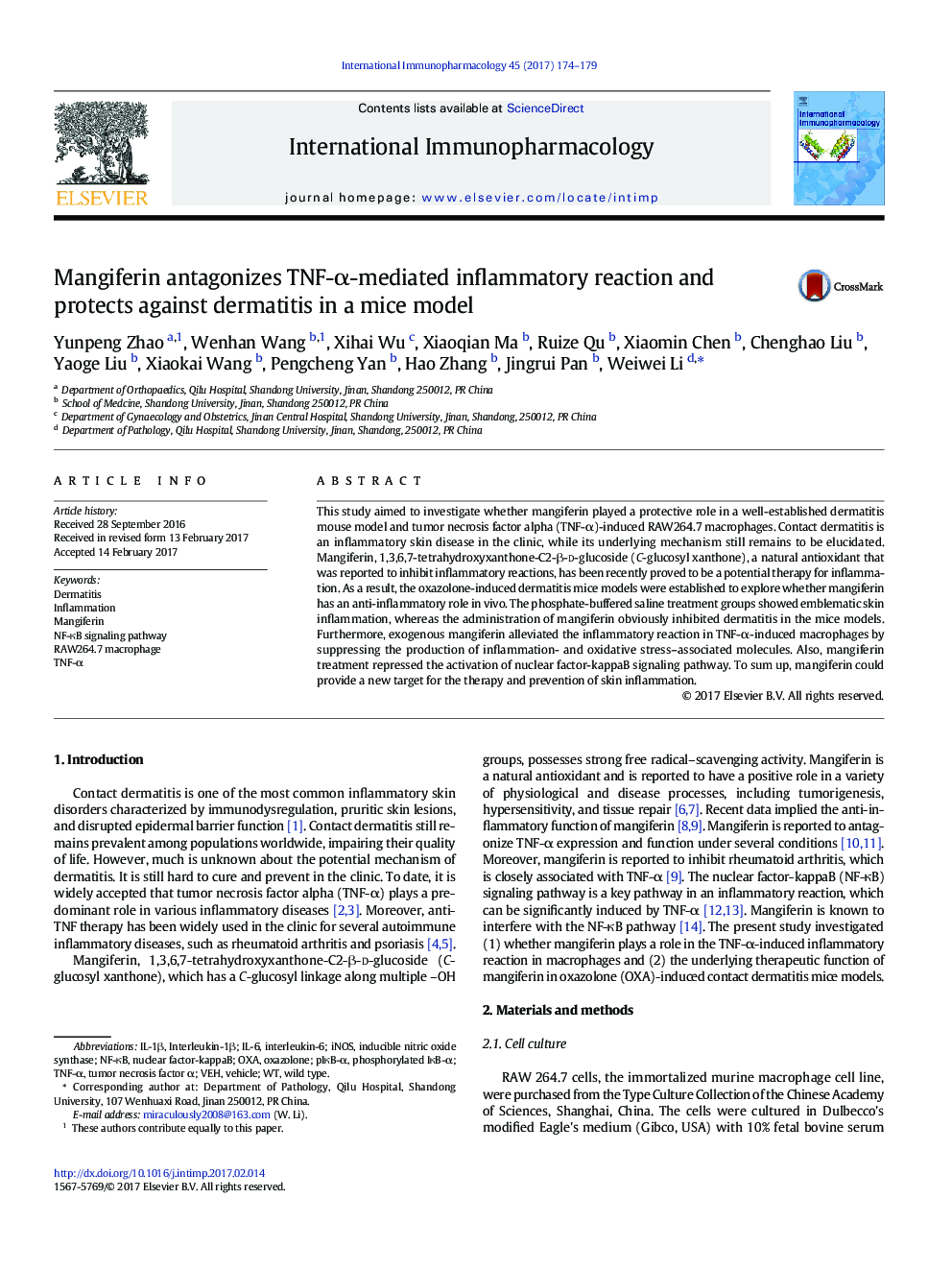| Article ID | Journal | Published Year | Pages | File Type |
|---|---|---|---|---|
| 5555608 | International Immunopharmacology | 2017 | 6 Pages |
â¢Mangiferin could provide a new target for prevention of skin inflammation.â¢Mangiferin repressed activation of NF-κB signaling pathway in vivo.â¢Mangiferin played a positive role in inhibiting dermatitis.â¢Mangiferin may serve as a potential therapeutic agent against skin inflammation.
This study aimed to investigate whether mangiferin played a protective role in a well-established dermatitis mouse model and tumor necrosis factor alpha (TNF-α)-induced RAW264.7 macrophages. Contact dermatitis is an inflammatory skin disease in the clinic, while its underlying mechanism still remains to be elucidated. Mangiferin, 1,3,6,7-tetrahydroxyxanthone-C2-β-d-glucoside (C-glucosyl xanthone), a natural antioxidant that was reported to inhibit inflammatory reactions, has been recently proved to be a potential therapy for inflammation. As a result, the oxazolone-induced dermatitis mice models were established to explore whether mangiferin has an anti-inflammatory role in vivo. The phosphate-buffered saline treatment groups showed emblematic skin inflammation, whereas the administration of mangiferin obviously inhibited dermatitis in the mice models. Furthermore, exogenous mangiferin alleviated the inflammatory reaction in TNF-α-induced macrophages by suppressing the production of inflammation- and oxidative stress-associated molecules. Also, mangiferin treatment repressed the activation of nuclear factor-kappaB signaling pathway. To sum up, mangiferin could provide a new target for the therapy and prevention of skin inflammation.
